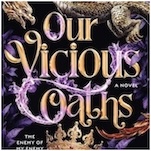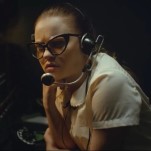5 Fascinating Documentaries on Cartoonists and Cartooning

Once widely considered to be the sole province of children, cartoons—both on the page panel and the animation cel—have, in the subsequent decades, seen a seismic shift in reader/viewership when it comes to age-appropriateness. In fact, with Saturday morning cartoon blocks disappeared from the major networks, and print media’s ever-shrinking footprint—including the back pages relegated to the funnies—the medium has had to find new formats to stay vital. Whether from the “underground comix” movement beginning in the late ’60s, to the adults-only segments of programming on Cartoon Network and the current exponential growth of web-based ’toons, the field’s at least as open now to grownups as it is kids. Maybe even more so than kids. Here are five documentaries for those among us who readily embrace their inner child to better explore what it means to actually be an adult.
1. Seoul Sessions (2012)

So much regarding the production behind our favorite animated programs in the States is obfuscated. For instance: the fact that roughly 85% of animated television shows designed in the states are actually animated in South Korea. How does an aspiring animator gain confidence in their role as director when more than three-fourths of the actual animation takes place in a faraway country? For LeSean Thomas, animator for such shows as The Boondocks and The Legend of Korra, the answer was simple: move to South Korea and learn as much as possible. Seoul Sessions follows Thomas’ four-year odyssey as a South Bronx native turned South Korean transplant as he worked through the process of honing his craft to finally producing his own independent animation. The series is a riveting depiction of one animator’s inspiring story, crossing national and cultural boundaries on a journey born out of a love for the craft of animation. From struggles of acclimating to a new language to comparing the virtues of layout drawings versus storyboards, Thomas is earnest, encouraging, and above all undaunted by the hurdles and challenges stacked between him and his dreams while inspiring others to do the same in their own journeys. —Toussaint Egan
2. Cartoon College (2013)

Drawing parallels between independent comic creators, punk musicians and DIY filmmakers, Cartoon College identifies the challenges that are specific to the college students’ chosen medium. The film’s most revealing passage details how learning the skills and work ethic required to realize their unique visions also familiarizes them with precisely how labor-intensive the process is. Consequently, even before they’ve launched their careers, they’re forced to confront the fact that they’ll simply never have enough time to tackle every project they envision. In reconciling themselves with this harsh reality, they also accept that they’re condemning themselves to a future of frustration. —CurtisWoloschuk
3. Dear Mr. Watterson (2015)

Dear Mr. Watterson illustrates what can happen when a passionate young filmmaker decides to put together a documentary that pays tribute to one of his childhood totems. A warm salute to the acclaimed comic strip Calvin and Hobbes—and, tangentially, its creator Bill Watterson—the full-length debut of director Joel Allen Schroeder does an impressive job gathering plenty of talking-head interviews from notable individuals in the comics world, although not from the press-shy Watterson himself. But even if you share Schroeder’s abiding love for this strip about a troublemaking boy and his loyal tiger, you may still wish that he hadn’t approached the material with such wide-eyed enthusiasm. When Dear Mr. Watterson less about himself, the film opens up to become an engaging study of a misunderstood, often dismissed art form. Responsible for coming up with funny strips on a daily basis that can appeal to a large mainstream audience, cartoonists must be a combination of storyteller, entertainer and stand-up comedian, trying to stay faithful to a dependable formula while flirting with experimentation to keep things fresh for themselves and their audience. That in such a pressure-cooker environment Calvin and Hobbes didn’t just blossom but thrive is something of a miracle. That’s the central message of Dear Mr. Watterson, and it’s an important one, even if the messenger leaves something to be desired. —Tim Grierson
4. Stripped (2015)

Stripped unravels the history of comic strips, addresses how cartoonists have dealt with the failing newspaper industry and looks into the recent transition of comics to the Web. The documentary includes interviews with over 70 comic creators, and the film’s poster features the work of Bill Watterson, his first since the end of Calvin and Hobbes in 1995. Even cooler, Stripped was made possible by the support of comic strip enthusiasts via a Kickstarter campaign that raised $109,025. —Muriel Vega
5. Crumb (1994)

Robert Crumb, one of the most controversial cartoon artists of the late ’60s and ’80s, continues to impress his fans with his eccentric persona and borderline gross perspectives even today. Starting his own Zap Comix in 1968—printed by filmmaker and Beat writer Charles Plymell—he’s since dedicated his time to creating his own work (notably, Fritz the Cat). He also managed to merge his passion for music with his illustrations, as can be seen in the book R. Crumb—The Complete Record Cover Collection, in which you can enjoy his artwork for bands like Big Brother & The Holding Company, Blind Boy Fuller and of course his own musical formation, R. Crumb and his Cheap Suit Serenades. Crumb tends to mix his own personal fetishes and obvious sexual preferences into his work without ever losing face with Freudian clichés. Anyone who has ever studied his comics and other illustrations must have noted that this is not just a man who is evidently hung up on some satirically sexual identification with his characters—derived squealing from his Id—but a man who must depend upon his privacy. A documentary about himself and the people closest to him … Who could be trusted enough to be granted such an intimate insight into his family? There was only one man for the job: friend and fellow cheap suit Terry Zwigoff, who ended up spending nine years on this project. Crumb might make you blush uncontrollably at times—it will definitely leave you with a bit of a gabble in your throat—but as a piece of totally DIY insight into artistic genius, it’s achingly personal. —Roxanne Sancto






































